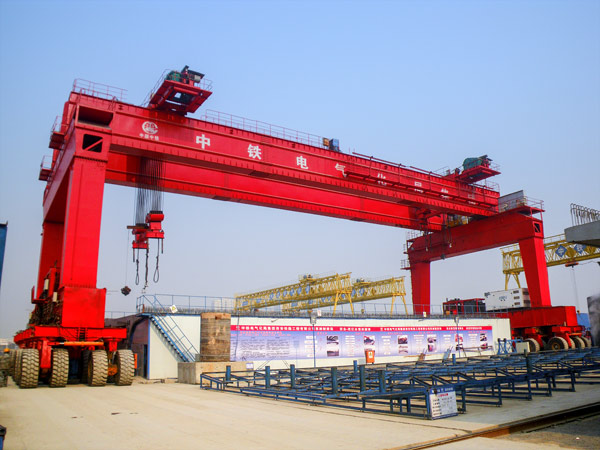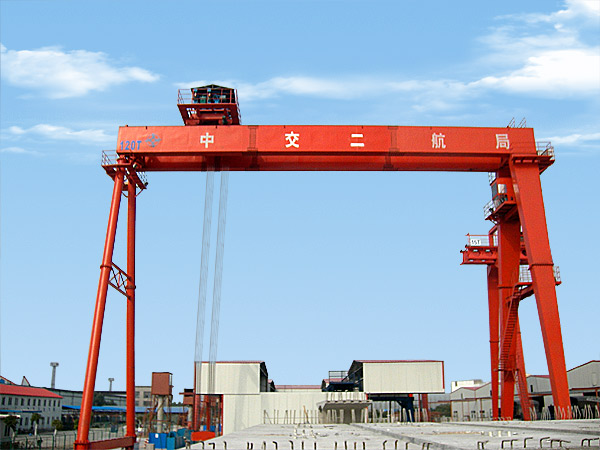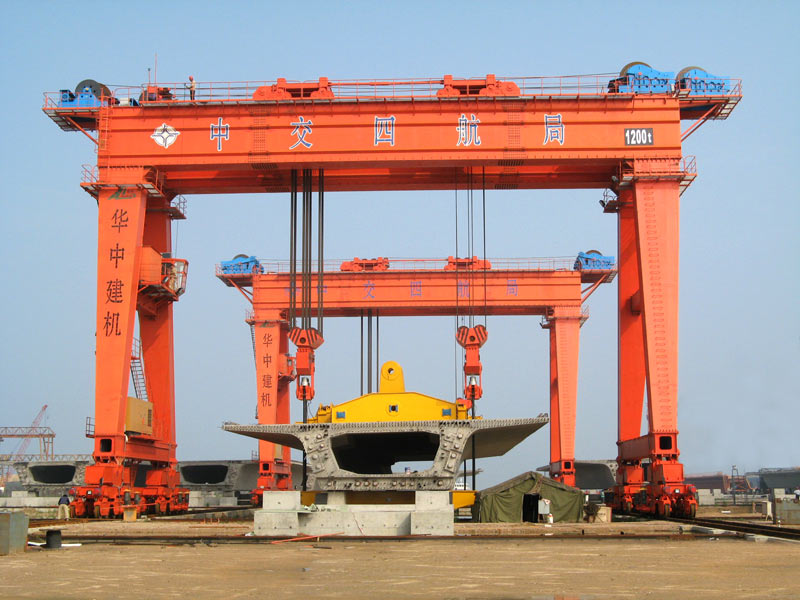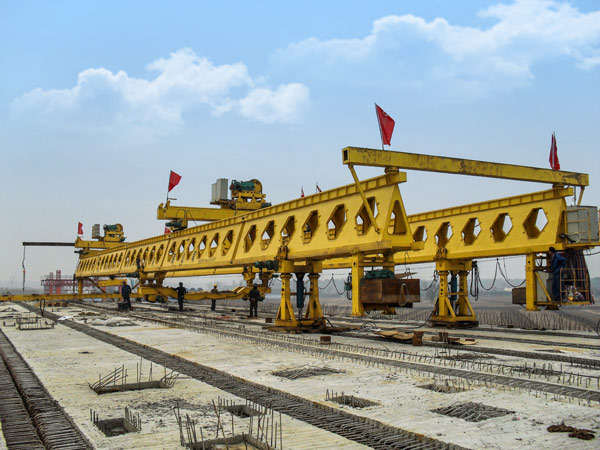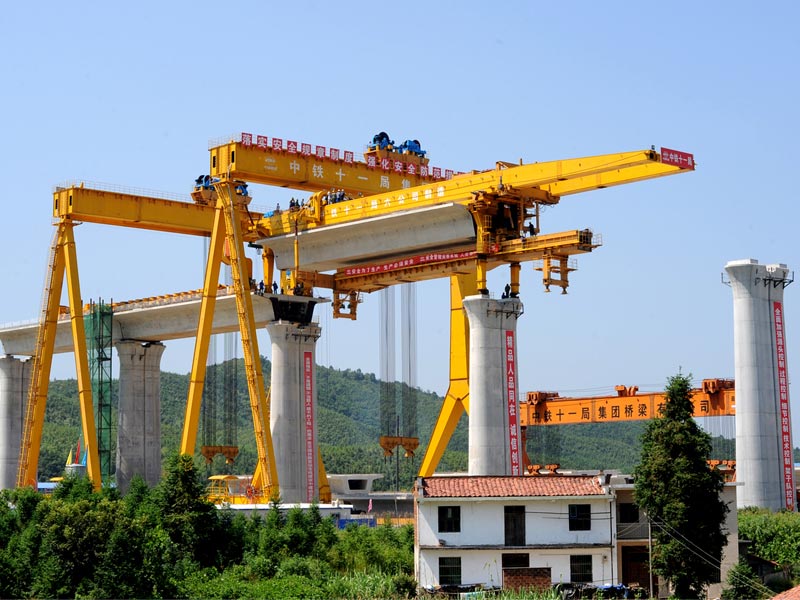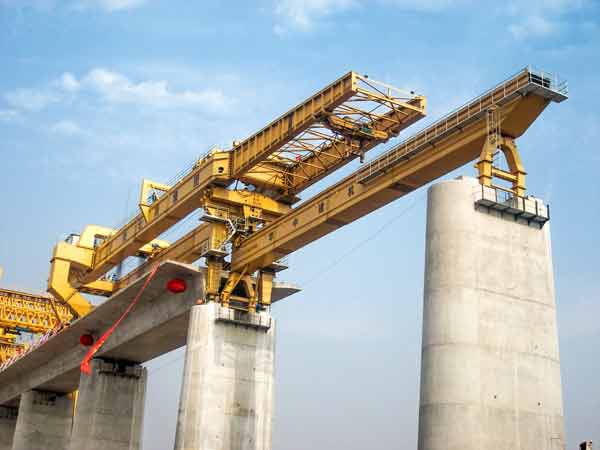Preparations for gantry crane construction
The gantry crane is a kind of bridge crane whose horizontal bridge is arranged on two supporting legs to form the gantry shape. Operating on ground tracks, the crane is used for handling and erailing operations in open storage yards, shipyards, power stations, ports and railway freight depots. In order to improve the installation time of gantry crane, what work needs to be done before installation?
1, to check the integrity of the accessories and electrical system, and will be required to prepare the track;
2. Make a good foundation and flatten and tamp the low ground. The relevant specifications should meet the acceptance standards of the construction unit;
3. Check the rail base beam, measure the straightness and levelness, etc.
4, do a good job in the construction of personnel identification inspection work;
5. Prepare relevant tools, installation technical documents, personal security guarantee in advance;
6. Issuing a written notice of commencement;
7. Check the integrity of the equipment;
8. Installation and layout of construction power supply and lighting equipment.
Operation method of gantry crane
1. When lifting heavy objects, the hook wire rope should be kept vertical, and the object is not allowed to be dragged diagonally.
2, the hanging weight should find the center of gravity, and tied firmly. The application pad with acute angles is well padded.
3, in front of the heavy lifting off the ground, the crane shall not do rotary movement.
4. When lifting or lowering heavy objects, the speed should be uniform and stable to avoid sharp changes in the speed, which will cause dangerous swing of the heavy objects in the air. When falling heavy objects, the speed should not be too fast, so as not to break the heavy objects when landing.
5, the crane in the case of lifting weight, try to avoid the boom. The lifting weight must not exceed 50% of the specified weight when lifting and landing the boom.
6. When the crane rotates under the condition of heavy lifting, it should pay close attention to whether there are obstacles around. If there are obstacles, it should try to avoid or clear them.
7. No personnel shall stay under the crane boom, and try to avoid personnel passing.
8, two cranes in the same track operation, the distance between the two machines should be greater than 3m.
9. When two cranes hoisting an object together, the lifting weight shall not exceed 75% of the total lifting weight of the two cranes. The walking and lifting action of the two cranes shall be consistent.
10, lifting, luffing wire rope should be checked once a week, and make records, the specific requirements according to the relevant provisions of the lifting wire rope.
11. When the empty car goes or turns around, the hook should be above 2m from the ground.
When the wind exceeds 6, stop working immediately. The TMK shall turn the boom to the downwind direction and drop appropriately to secure the hook. The gantry crane shall make the iron wedge (rail stop) and lift the hook to the upper limit. At the same time close the doors and Windows, cut off the power supply, pull the cable wind rope. After the usual work should also be handled according to this.
13. It is strictly prohibited to pile miscellaneous items on the crane platform to prevent people from falling down during operation. Frequent tools should be placed in the special tool box in the operating room.
14. In operation, it is not allowed to change speed or reverse speed suddenly, so as not to cause heavy objects to swing in the air, and it is not allowed to start more than two (including the auxiliary hook) operating mechanisms at the same time.
15. When driving, the operator's hand shall not leave the controller. When a fault occurs suddenly in operation, measures should be taken to land heavy objects safely, and then cut off the power supply for repair. It is strictly prohibited to repair and maintain in operation.
Notes for gantry crane
1. The weight exceeds the rated lifting weight of the crane.
2. The weight of heavy objects is unknown.
3. Unclear signal.
4. Heavy objects are not tied firmly.
5, open air operation in six (beam on the five level) above the wind and heavy rain, fog and other bad weather.
6, night work lighting is not good.
7. Bevel pull.
8, serious wear and tear of the steel wire rope and broken shares and someone in the crane or machine room for maintenance.


